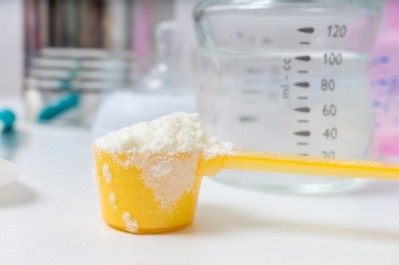Middle East a ripe market for baby food makers

According to a report from India-based Ken Research, the region’s burgeoning infant population coupled with an increased number of women at work has made it a lucrative market for baby food makers.
Infant population on the rise
“The target population of baby foods is the 0-4 year age-group which is expanding rapidly. The higher population base prevalent in different geographic markets has proved as a competitive advantage to the burgeoning baby food industry in MENA,” the report said.
The region’s baby food market, which grew at a CAGR of 11.2% between 2007 and 2012, has benefitted from the region’s relatively high birth rates compared to western countries, the report said.
In addition, parents in MENA have become progressively aware about the importance of baby food with respect to the nutritional requirements of their child and rising disposable incomes have encouraged them to provide the best nutritional baby food available.
The report pointed out that even during the recessionary years of 2008-2009, the baby food industry in MENA fared well, witnessing an annual growth of 11.7% in 2008 and 11.1% in 2009.
According to the report, MENA’s baby food market is split on the basis of product categories, including milk formula, dried baby food, prepared baby food and other baby foods.
Amongst the product categories, infant formula has dominated the baby food market in the MENA region for several years, but the dried baby food market is also expected to grow at a CAGR of 9.1% during the period of 2012-2017.
Saudi Arabia the biggest market
Saudi Arabia held the maximum share with a contribution of 37% in the overall revenues of the MENA region in 2012 when it came to the baby food market. According to the report, the market is supported by a high birth rate of 19.2 births per 1,000 people as of 2012 and women’s rising contribution in workplace.
“As the workforce dynamics change with increasing women participation, the time constraints of the occupation has propelled parents to opt for packaged baby food offering a convenient solution,” it said.
Infant formula is the largest revenue generator in baby food market in Saudi Arabia, where despite a strong tradition of breastfeeding, fewer than 20% of women exclusively breastfeed their children.
Revenues in the Saudi Arabia infant formula market have inclined at a rate of 15.7% over the review period of 2007 to 2012, where Wyeth (Nestle), Similac, Nestle Nan, Aptamil and Bebelac are some of the major standard infant formula brands.
UAE and Qatar present new opportunities
In the UAE, while the baby food industry is rapidly growing, the market is characterized by a growing appetite for differentiated baby food offerings among parents.
“UAE with 85% urban population and increasing income levels have presented a favourable picture for the growing baby food market,” the report said. “The overall baby food market in UAE is projected to advance with a CAGR of 16.8% in revenue terms between 2012 and 2017.”
The situation is similar in Qatar, the Middle East’s fastest growing economy, where rising consumption levels coupled with high income levels present an opportunity for baby food makers.
According to the report, the baby food industry in Qatar is expected to witness high growth in the coming years with a CAGR of 18.7% towards 2017.
“The rise in consumer confidence coupled with the constant increase in income levels will continue to instigate the buying behaviour for baby food in the country,” it said.


















